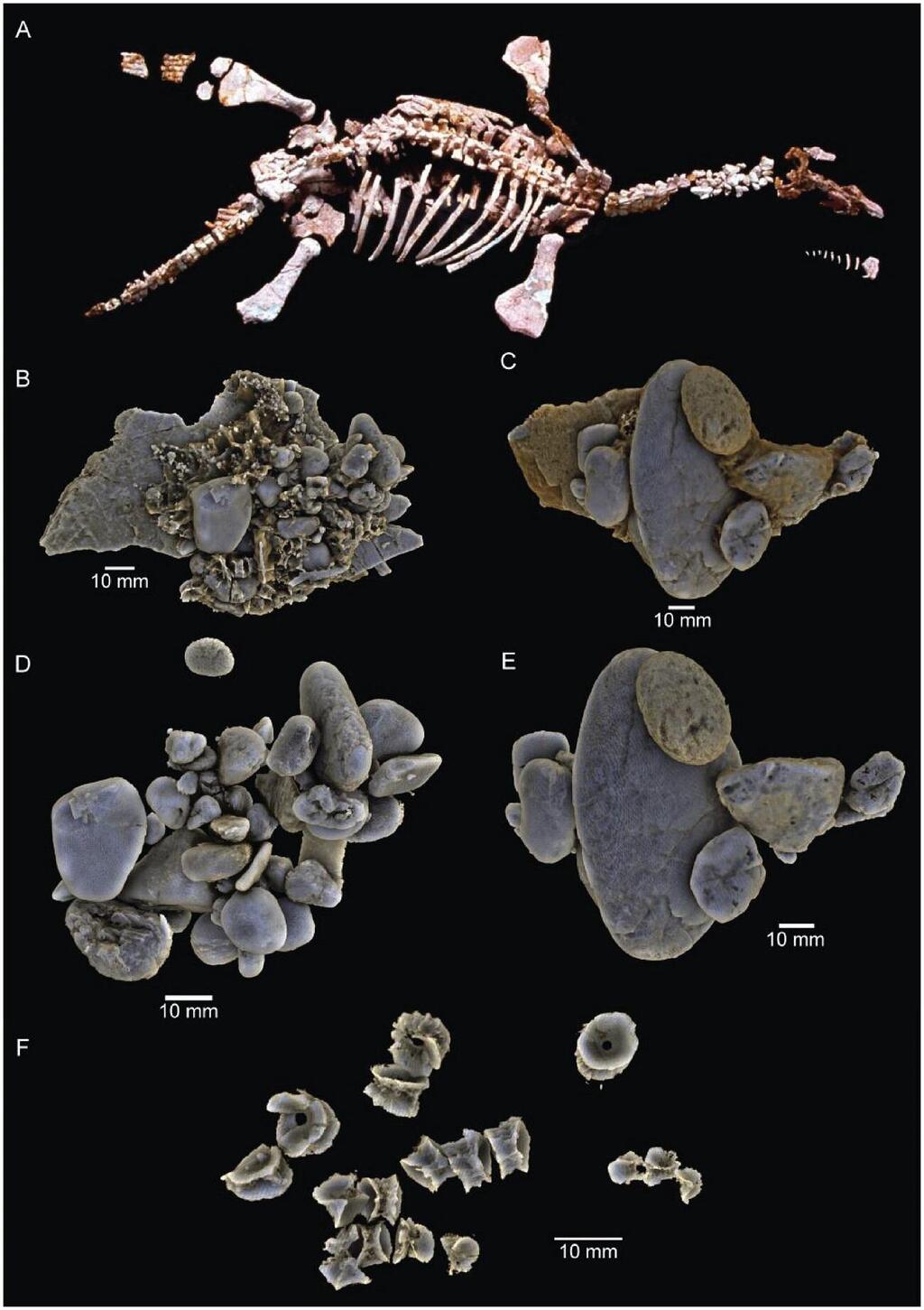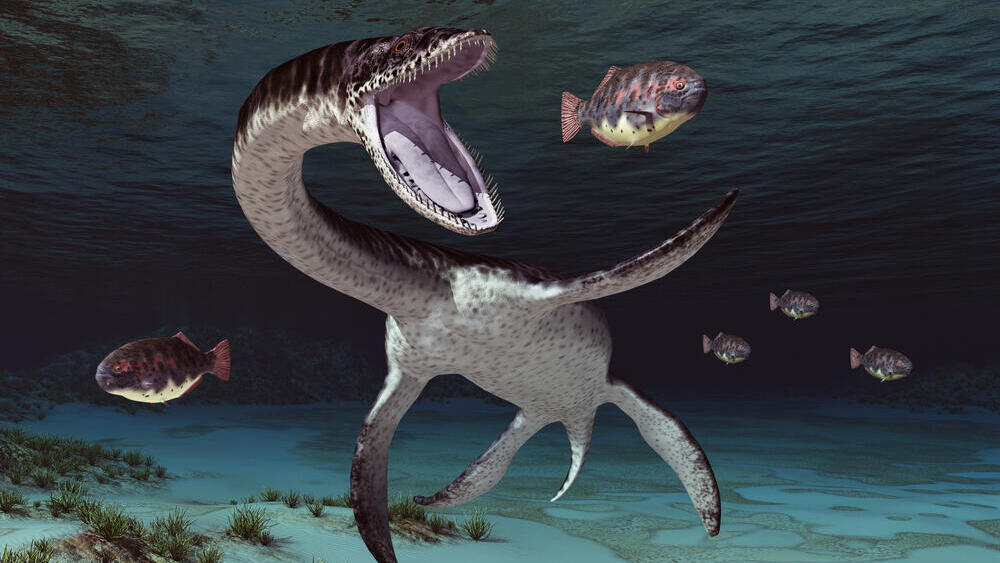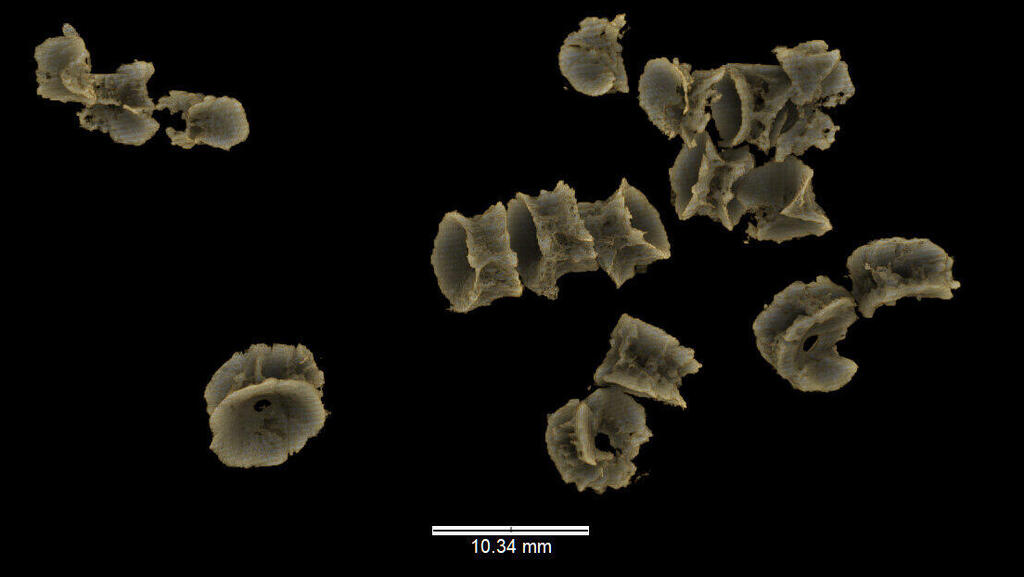Have you ever wondered what dinosaurs ate? A team of researchers from the National University of Australia may have the answer.
More stories:
Using CT scans based on X-rays, scientists were able to peek into the well-preserved remains of a plesiosaur and determine what it ate before it died.
The ancient marine reptile, known endearingly as "Eric" after a character from the British comedy group Monty Python, is a member of the Plesiosauria family that lived during the Jurassic period 200 million years ago and could reach lengths of up to 3 meters.
Researchers were able to find 17 previously unidentified fish vertebrae in the animal's intestines, which was discovered in 1987 in Coober Pedy, a town in southern Australia, indicating that the plesiosaur's diet was mainly composed of fish - a finding that aligns with results of previous studies conducted in 2006.
The findings, published in the journal Alcheringa: An Australasian Journal of Palaeontology, may provide a deeper understanding of the evolutionary history of extinct organisms like this plesiosaur, as well as in predicting the future of marine life on Earth.
According to the researchers, the study demonstrates the potential of X-ray scans to reconstruct the diets of other extinct organisms that inhabited the Earth hundreds of millions of years ago.
According to Joshua White, one author in the study, "Previous studies have examined the exterior of Eric's skeleton in an attempt to find clues about his diet. However, this approach can be difficult because it's rare to find well-preserved gut contents, especially when they aren't visible to the naked eye, which often forces paleontologists to destroy the fossil itself.
"We believe that our study is the first in Australia to use X-rays to examine the gut contents of a prehistoric marine reptile to a degree where previously unseen fish bones were found inside," White added.
He also emphasized the advantage of using X-rays to study prehistoric animals is evident in the fact that it does not damage the fossil, which is crucial when dealing with delicate and ancient samples such as Eric's.
White and his colleagues filtered all the images and data obtained from the scans and created a 3D model of the gut's contents, to differentiate between what they believed to be evidence of fish bone remains, gastroliths (stomach stones) which are stones certain animals swallow to assist in the digestion process and other material.
3 View gallery


Plesiosaur's skeleton and gut content
(Photo: Alcheringa: An Australasian Journal of Palaeontology)
"This is a medium-sized predator, similar to a sea lion, that ate small fish and was likely preyed upon by larger predators at the top of the food chain," White said.
"We were very fortunate to study one of the most complete skeletons of vertebrates in Australia, with almost 93% of the fossil still intact, which is almost unprecedented in terms of fossil preservation," he explained.
Deepening the knowledge about the nutrition of extinct organisms is an important step in understanding their evolutionary past, but it can also help us understand how present-day animals are affected by events such as climate change.
"As environments change, so does the diet of marine animals, and understanding these changes can be used to predict their response to today's ever-increasing climate challenges," White said.
"If an animal had a dietary change, we want to examine why this change happened, so that we can compare the findings in extinct animals to modern animals such as dolphins or whales and try to predict how their diet may change due to global warming, and why."



